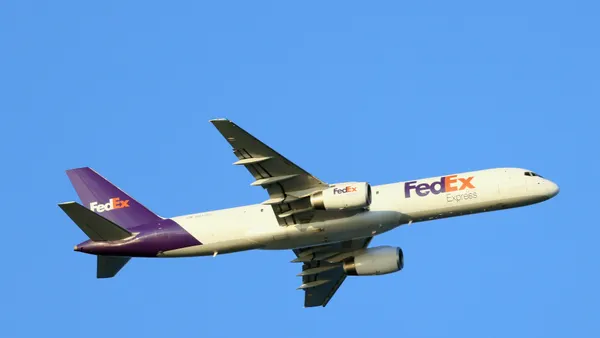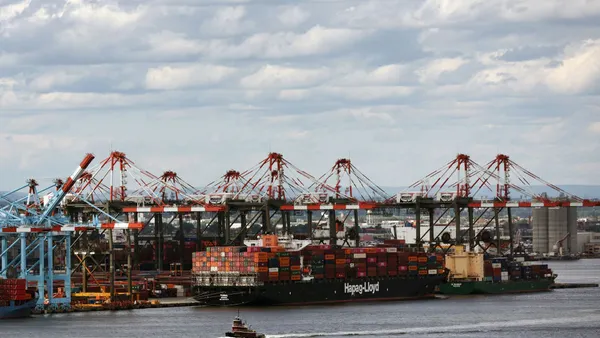Dive Brief:
- Capacity imbalances stemming from the coronavirus pandemic seen across freight modes throughout early 2020 could continue as the result of "expected future volatility in consumer demand," according to the newly released State of Logistics report, titled "Resilience Tested," from the Council of Supply Chain Management Professionals (CSCMP), Kearney and Penske Logistics.
- "We are fairly certain that supply chains and the logisticians supporting them will have a new focus on resilience," Michael Zimmerman, a partner at Kearney and author of the report, said during a press event Monday. "And that means having more options. Multishoring and higher inventories are two likely outcomes."
- Part of the increased focus on resilience will require shippers to place "new demands on the providers and managers of logistics capacity," according to the report. Shippers should also consider planning for multi-modal, multi-carrier alternatives to existing routes. "Can you switch if need be from passenger belly transport to pure freighters?" the report reads, "If so, will the cargo arrive at different ports, requiring domestic truck transport? Now is the time to plan that out."
Dive Insight:
As a global recession leaves companies across industries struggling, the financial health of carriers and suppliers is an important consideration for a shipper taking stock of their supply chain resilience, according to the report.
When the pandemic began disrupting operations, Cargill began to "diversify away" from logistics providers it considered risky or did not have adequate service levels. It also went through the process of identifying instances of single sourcing within its supply chain to find opportunities to add redundancy, Jacqueline Bailey, the North American regional lead at Cargill Transportation & Logistics, said during a panel discussion that coincided with the release of the report.
When determining the risk of an existing logistics partner, Cargill would mostly look at liquidity and service performance. "We've got a service that we utilize that helps us provide a benchmark our providers," Bailey said without naming the service.
"If we don't have enough [volume] to keep all of our providers busy, you have to make some difficult choices," she said. "And as we're making those difficult choices, the sorting device that we used was looking at the risk levels or our perceived risk of using a particular provider."
Shippers have also benefited from low spot rates from motor carriers, but the report noted this limits the carrier's ability to invest in its fleet and provide better service moving forward. How shippers should manage these relationships varies, depending on if their business is still moving normal volume or if it has slowed.
Those seeing normal or increased volume should work with carriers to build out and invest in the network. While those seeing a slowdown have an opportunity to cut costs by revaluating contracts and existing carrier relationships, the report said.
The report underscored shippers' need to focus on the financial stability of carriers across freight modes. Ocean carriers especially have struggled as a result of the pandemic. When volume declined sharply in the first half of 2020, companies responded by canceling sailings to manage capacity and keep rates aloft. Moving forward, shippers should be ready for potential consolidation or bankruptcies from ocean carriers, the report said.
Shippers could increase their use of air cargo as a result of a greater focus on resiliency, as it is often considered the most agile freight mode. But carriers will also need to increase their flexibility and should consider the creation of an enterprise risk management framework, according to the report.
The report aligned with other assessments in concluding the warehousing sector is well-positioned to weather the pandemic as a result of the growth in e-commerce and changing inventory practices that shift away from lean just-in-time models.
"We don't know how the various supply chains are going to be reacting to this," Zimmerman said on Monday, adding that early estimates suggest inventory carry costs could increase 5% to 10% as a result of the pandemic.
Overall logistics costs rose 0.6% in 2019 to account for 7.6% of U.S. gross domestic product. "Carriers reversed rate increases while curtailing capacity growth and shippers breathe easier, as capacity became abundant," Zimmerman said in explaining the 2019 logistics market.
"Yet in mid-2020 that all seems like history," the report noted. "The pandemic, and global measures taken to reduce its further spread, have decimated supply chains, scrambled logistics capabilities, and destroyed huge swaths of demand. The size, shape, and timing of a recovery remain in question."














